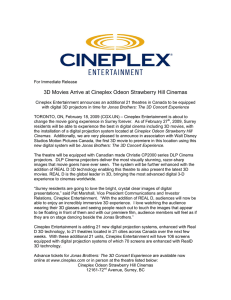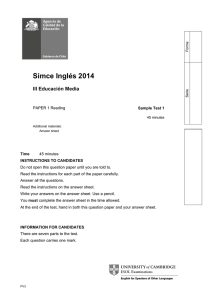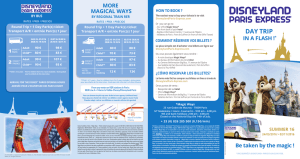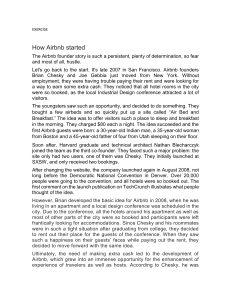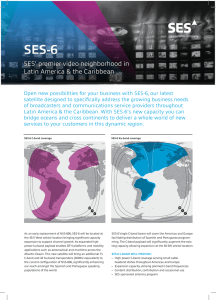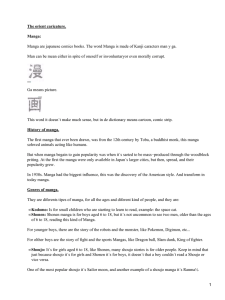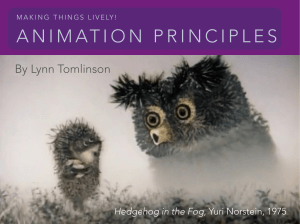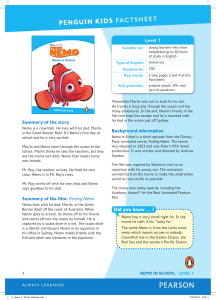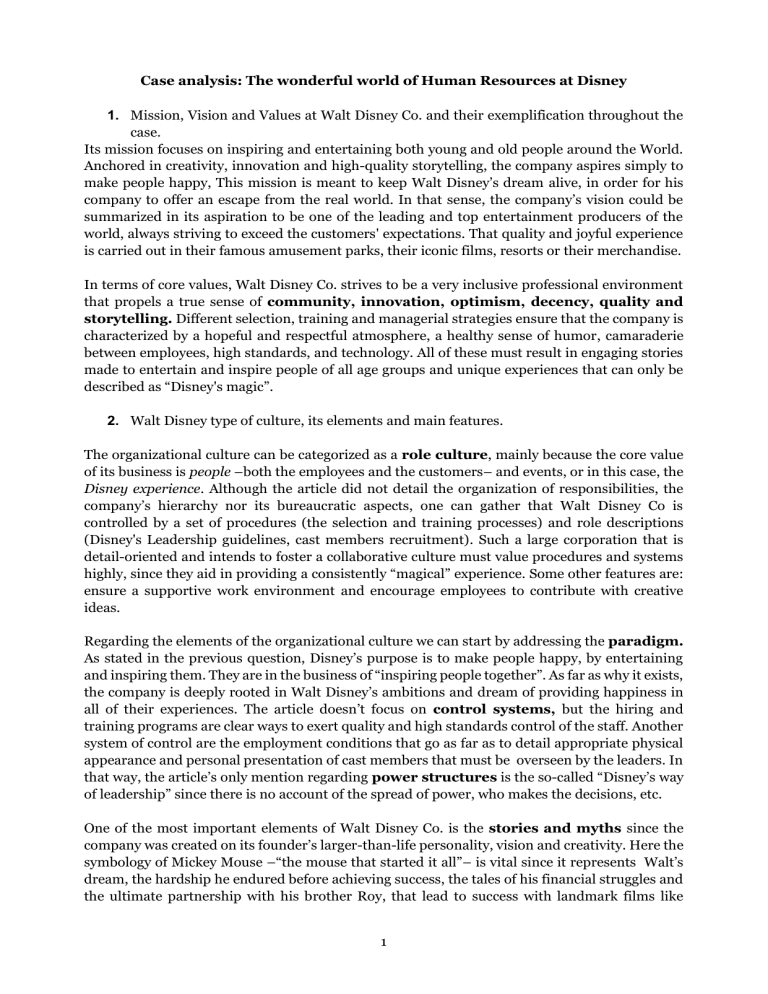
Case analysis: The wonderful world of Human Resources at Disney 1. Mission, Vision and Values at Walt Disney Co. and their exemplification throughout the case. Its mission focuses on inspiring and entertaining both young and old people around the World. Anchored in creativity, innovation and high-quality storytelling, the company aspires simply to make people happy, This mission is meant to keep Walt Disney’s dream alive, in order for his company to offer an escape from the real world. In that sense, the company’s vision could be summarized in its aspiration to be one of the leading and top entertainment producers of the world, always striving to exceed the customers' expectations. That quality and joyful experience is carried out in their famous amusement parks, their iconic films, resorts or their merchandise. In terms of core values, Walt Disney Co. strives to be a very inclusive professional environment that propels a true sense of community, innovation, optimism, decency, quality and storytelling. Different selection, training and managerial strategies ensure that the company is characterized by a hopeful and respectful atmosphere, a healthy sense of humor, camaraderie between employees, high standards, and technology. All of these must result in engaging stories made to entertain and inspire people of all age groups and unique experiences that can only be described as “Disney's magic”. 2. Walt Disney type of culture, its elements and main features. The organizational culture can be categorized as a role culture, mainly because the core value of its business is people –both the employees and the customers– and events, or in this case, the Disney experience. Although the article did not detail the organization of responsibilities, the company’s hierarchy nor its bureaucratic aspects, one can gather that Walt Disney Co is controlled by a set of procedures (the selection and training processes) and role descriptions (Disney's Leadership guidelines, cast members recruitment). Such a large corporation that is detail-oriented and intends to foster a collaborative culture must value procedures and systems highly, since they aid in providing a consistently “magical” experience. Some other features are: ensure a supportive work environment and encourage employees to contribute with creative ideas. Regarding the elements of the organizational culture we can start by addressing the paradigm. As stated in the previous question, Disney’s purpose is to make people happy, by entertaining and inspiring them. They are in the business of “inspiring people together”. As far as why it exists, the company is deeply rooted in Walt Disney’s ambitions and dream of providing happiness in all of their experiences. The article doesn’t focus on control systems, but the hiring and training programs are clear ways to exert quality and high standards control of the staff. Another system of control are the employment conditions that go as far as to detail appropriate physical appearance and personal presentation of cast members that must be overseen by the leaders. In that way, the article’s only mention regarding power structures is the so-called “Disney’s way of leadership” since there is no account of the spread of power, who makes the decisions, etc. One of the most important elements of Walt Disney Co. is the stories and myths since the company was created on its founder’s larger-than-life personality, vision and creativity. Here the symbology of Mickey Mouse –“the mouse that started it all”– is vital since it represents Walt’s dream, the hardship he endured before achieving success, the tales of his financial struggles and the ultimate partnership with his brother Roy, that lead to success with landmark films like 1 Snowwhite The stories of Roy's business talent paired up with his brother's unparalleled imagination are transmitted at Disney University, a place where all new cast members learn about Disney’s traditions and curious history. In this way, the company’s biggest symbol is Mickey Mouse, his ears and silhouette are repeated in many offices and subsidiaries’ logos. Other symbols are Walt Disney himself and iconic features of the amusement parks (Magic Kingdom’s castle is replicated in different corporate imagery). Disney has some rituals and routines, primarily found during the training process where there is an actual Traditions class, featuring “tradition assistants” that teach cast members about Walt’s legacy, the characters and films, the history, etc. One ritual is the trivia games they play to help new staff additions reinforce this information. And a routine is the “guest service fanatic card” which is a reward that leaders and managers give out to employees when they excel at their performance and thoughtfulness towards guests. 3. Welcome (core) competencies and unwelcome competencies The company's welcome competencies are connected to the corporate values: cast members must be positive, kind, respectful, patient, and compliant with the company’s rules and specific employment conditions. They must have appropriate body language and courteous oral expression (they should also be proficient in Disney’s special corporate vocabulary and have a good tone of voice), they should also stay in character at all times, having exemplary behavior around guests and being helpful towards their inquiries and demands. It is also important to note that creativity is a highly sought-after ability because employees should feel free to communicate their good ideas, ensuring innovation runs in every aspect of the company. Disney employees –especially leaders– are required to be good at interpersonal relationships and communication. All while being a genuine team player with an open mind. One competency that is encouraged and emphasized in the article on several occasions is the need for the employees to have a good sense of humor, a vital characteristic as Disney needs to exceed high customer’s expectations who are looking for a specific experience: a magical one. On the contrary, some unwelcome competencies at Disney are rigidness, bad personal presentation, lack of humor, aversion against rules, rudeness, being empathetic, unkind, impatient, inflexible, individualistic and selfish (doesn’t foster camaraderie). 4. Hiring, Training and Leadership Policies description. The hiring process is a thorough and demanding one since the company is detail oriented and looks for a very specific profile of employees that can comply with the rules and expectations that come with the job. The selection process is an effective way to control and influence the kind of experience guests are going to have at Disney. In the past, interested individuals used to fill out application forms at the amusement parks or job fairs. However, over time the corporation started using recruiting programs and then online tools. Diversity is pursued because it’s vital for Disney’s employees to represent the wide variety of guests they welcome. After application, an interview process is conducted at casting centers where Disney’s history and terms of employment are carefully explained to them. If an applicant overcomes the interview process, they arrive to the training stage. It is conducted partly at Disney University, where brand new cast members learn everything about Disney, and they are taught how to behave “onstage”. Afterwards, they are trained in situ, 2 learning the specificities of their job at the amusement park or resorts. Only then they are allowed to carry their job in front of guests, but they are closely monitored. Focusing on their leadership policies, we should address Disney's Way of Leadership. Leaders are trained and expected to hold their team together, defend and embody the company’s identity, inspire the organizational culture and, thus, guarantee a good relationship with all cast members. This roles are described as “people specialists” who are team players and work hard at developing their communication, organizational, planning, human relationship and training skills. It is valid to note the leadership shift that took place in the company around 1984, imposing a new leadership style. Their policy started the company towards a more open, less-rigid, partner-like relationship among company heads and the employees. New ways were established to motivate employees to develop their own carriers, to lead a healthy lifestyle, get education and training, among other measures. Even today this “refueling” approach endures, as it benefits the customer in the end and helps the company to “keep the magic going”. 5. Walt Disney's strengths, weaknesses, opportunities and threats in the current global environment Strengths: Walt Disney corporation seems to be a larger-than-life company, in part because it is. One of their most valuable assets is its high brand value and the positive image and reputation this carries: they are well-known and easily recognizable around the whole world. We, as customers, have come to recognize Disney productions, experiences and products as high quality and joyful, which makes us rely upon their productions. The logistics and leadership of Disney have been able to achieve an admirable coordination of contents and experience across their different brands and companies, they are consistent with their standards. This translates into a huge revenue and cash flow –emanating from its various subsidiaries–. Another strength is their human capital and how the talent that its different teams possess, comes out in every of their artistic and creative endeavors. In turn, this results in another strength: the wide range of audience their content has as they produce entertainment for people of all ages. Weaknesses: Disney has made some big investments and purchases in the last few years, buying Hulu (with the purpose of using its already existing streaming infrastructure for Disney+), Fox, franchises like Marvel and Star Wars. This is relevant as this high rate of investments in a relative short time, affects the company’s finances and they don’t always see a profitable return on those investments. Another weakness is that Disney needs to remain competitive and capable against its competitors in different fronts. How do amusement parks stay relevant when Gen Z kids prefer other types of entertainment, mainly related to videogames and other technologies? It is worth mentioning that we have yet to see the full impact that the current pandemic will have on the different Disney companies and projects. Being in the entertainment industry, several of their projects have been negatively affected by lockdowns and travel restrictions. Also, their personal appearance policies could be more challenging to implement as time passes by because simply put, the world is changing, and new generations of employees could be more reticent to comply with those strict rules. 3 Opportunities: there seem to be plenty of opportunities for Disney to face its competitors on their different commercial fronts. One that comes quickly in mind is Disney+, their fairly-new streaming endeavor. Their streaming catalogue encompasses big entertainment brands and companies like NatGeo, Marvel, that in addition to their original catalogue (taking it away from streaming giants like Netflix) are competing in a streaming platform market that is rapidly growing. Disney could gain by investing more on technology and software innovation, not only in the streaming market, but in their amusement park experience, animation company and their merchandise product developing. This could help them reach even more people, bringing their magic to all parts of the world in a more technified and creative manner, especially having in mind the ongoing Covid-19 pandemic and the effect that it has had in mass gathering, events, traveling, movie theaters, and overall, the entertainment industry. In fact, the pandemic presents the company with an opportunity to reinvent or rethink their strategies, distribution channels and technology investment. Threats: Disney faces a great deal of competition especially in the international stage –their hold is rather strong in the US– where their film and tv production has to go up to more competition. How does their cinematic production remain competitive in an industry that’s producing more film than ever before? To keep Walt Disney’s dream alive, they must acknowledge that as a big company they are rather vulnerable to competition. One example of this is Disney+, the gamble the company took by creating its own streaming service and now has to face Netflix hegemonic power and the need to constantly put out new content. Generally speaking, the changing aspect of the entertainment environment –due to the pandemic and the disruption of streaming and digital content– poses a threat to Disney’s operations. 6. Main ideas on how to manage people at Disney taking into consideration that SWOT, giving special attention to the following question: How can they create people to be in love with being part of the Company? It must be exhausting, trying to keep the magic alive across sectors and companies in the 21st century when customers and audiences have become more demanding, socially aware and empowered than ever before. It seems to me that Disney has been aware of this –in addition to technological advance, the power of streaming and a changing global culture– as their latest business decisions have been aimed at keeping up with the different trends while maintaining the company’s unique DNA. Their managerial decision and human resources planning should emulate those decisions and walk that thin line between innovation and upholding traditional core values. Some ideas to manage people at Disney and make them fall in love with being part of the company come to mind. The organization should continue with their interest in innovation but in a more direct way. Making leaders foster an environment where creativity prosper might not be enough anymore, there should be innovation factories, programs, technology development investment and incentives so any Disney employee can contribute with ideas in a more channel and institutional way. This should also be emphasized during the hiring and training processes. It would be interesting to revise the employment condition requirements and the policy on personal presentation of cast members in amusement parks and hotels as it is important to ensure they keep up with the times and don’t reduce Disney’s applicants’ pool. In sum, making 4 sure that the company's not missing out on valuable potential employees based on minor appearance requirements, considering general trends of the younger generations. Lastly, employee personal development programs should be upheld and updated if needed because it could be an effective way to retain personal (in which the company invests considerable money in) and continue with the beneficial environment for the cast members. 5
